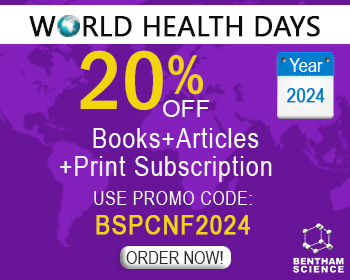Abstract
Recently, an increasing number of biological and clinical reports have demonstrated that imbalance of microbial community has the ability to play important roles among several complex diseases concerning human health. Having a good knowledge of discovering potential of microbe-disease relationships, which provides the ability to having a better understanding of some issues, including disease pathology, further boosts disease diagnostics and prognostics, has been taken into account. Nevertheless, a few computational approaches can meet the need of huge scale of microbe-disease association discovery. In this work, we proposed the EHAI model, which is Enhanced Human microbe- disease Association Identification. EHAI employed the microbe-disease associations, and then Gaussian interaction profile kernel similarity has been utilized to enhance the basic microbe-disease association. Actually, some known microbe-disease associations and a large amount of associations are still unavailable among the datasets. The ‘super-microbe’ and ‘super-disease’ were employed to enhance the model. Computational results demonstrated that such super-classes have the ability to be helpful to the performance of EHAI. Therefore, it is anticipated that EHAI can be treated as an important biological tool in this field.
Keywords: Diseases, microbe, colorectal cancer, machine learning, EHAI, HMDAD.
[http://dx.doi.org/10.1038/nature11209] [PMID: 22699610]
[http://dx.doi.org/10.1038/nature11234] [PMID: 22699609]
[http://dx.doi.org/10.1038/nrmicro2047] [PMID: 19029955]
[http://dx.doi.org/10.1038/nrmicro2974] [PMID: 23435359]
[http://dx.doi.org/10.1126/science.1124234] [PMID: 16741115]
[http://dx.doi.org/10.1016/j.smim.2006.10.002] [PMID: 17118672]
[http://dx.doi.org/10.1126/science.1104816] [PMID: 15790844]
[http://dx.doi.org/10.1038/nature07540] [PMID: 19043404]
[http://dx.doi.org/10.1016/j.cell.2014.09.053] [PMID: 25417156]
[http://dx.doi.org/10.1371/journal.pone.0090731] [PMID: 24618913]
[http://dx.doi.org/10.1016/j.cell.2014.08.032] [PMID: 25215495]
[http://dx.doi.org/10.1038/ismej.2010.118] [PMID: 20686513]
[http://dx.doi.org/10.1126/science.1208344] [PMID: 21885731]
[http://dx.doi.org/10.1016/j.jaut.2013.07.001] [PMID: 24075647]
[http://dx.doi.org/10.1016/j.endoen.2016.07.004]
[http://dx.doi.org/10.1038/nature07336] [PMID: 18806780]
[http://dx.doi.org/10.1097/MOP.0000000000000419] [PMID: 27606957]
[http://dx.doi.org/10.1097/01.MIB.0000200323.38139.c6] [PMID: 16432374]
[http://dx.doi.org/10.1101/gr.126516.111] [PMID: 22009989]
[http://dx.doi.org/10.1038/nrc3610] [PMID: 24132111]
[http://dx.doi.org/10.1371/journal.pone.0008578] [PMID: 20052417]
[http://dx.doi.org/10.1002/ibd.21436] [PMID: 20722058]
[http://dx.doi.org/10.1128/AEM.61.9.3202-3207.1995] [PMID: 7574628]
[http://dx.doi.org/10.1002/hep.24423] [PMID: 21574172]
[PMID: 26883326]
[http://dx.doi.org/10.1038/srep05501] [PMID: 24975600]
[http://dx.doi.org/10.18632/oncotarget.11251] [PMID: 27533456]
[http://dx.doi.org/10.1038/srep21106] [PMID: 26880032]
[http://dx.doi.org/10.1093/bib/bbw060] [PMID: 27345524]
[http://dx.doi.org/10.18632/oncotarget.11141] [PMID: 27517318]
[http://dx.doi.org/10.18632/oncotarget.10008] [PMID: 27322210]
[http://dx.doi.org/10.1093/bib/bbv066] [PMID: 26283676]
[http://dx.doi.org/10.1371/journal.pcbi.1004975] [PMID: 27415801]
[http://dx.doi.org/10.1183/09031936.00087906] [PMID: 17197483]
[http://dx.doi.org/10.1016/S0140-6736(15)60692-4] [PMID: 26063472]
[http://dx.doi.org/10.1016/j.jaci.2010.10.048]
[http://dx.doi.org/10.1016/j.jaci.2012.11.013]
[http://dx.doi.org/10.1371/journal.pone.0109710] [PMID: 25329665]
[http://dx.doi.org/10.1186/1471-2180-11-68] [PMID: 21477358]
[http://dx.doi.org/10.4168/aair.2010.2.3.199] [PMID: 20592920]
[http://dx.doi.org/10.1016/S0140-6736(14)61682-2] [PMID: 25530442]
[http://dx.doi.org/10.1016/j.jhep.2006.05.013] [PMID: 16879891]
[http://dx.doi.org/10.1038/nature13568] [PMID: 25079328]
[http://dx.doi.org/10.1016/j.jhep.2012.01.019] [PMID: 22326468]
[http://dx.doi.org/10.1111/j.1443-9573.2004.00157.x] [PMID: 15612659]
[http://dx.doi.org/10.1016/S0140-6736(14)60886-2] [PMID: 24910221]
[http://dx.doi.org/10.2337/db10-0253] [PMID: 20876719]
[http://dx.doi.org/10.1371/journal.pone.0009085] [PMID: 20140211]
[http://dx.doi.org/10.3748/wjg.v20.i16.4607] [PMID: 24782613]
[http://dx.doi.org/10.1371/journal.pone.0061516] [PMID: 23613868]
[http://dx.doi.org/10.1128/AEM.02821-13] [PMID: 24242241]
[PMID: 25759592]
[http://dx.doi.org/10.1039/c2mb25180a] [PMID: 22875290]
[http://dx.doi.org/10.1038/srep11338] [PMID: 26061969]
[http://dx.doi.org/10.1093/bioinformatics/btt426] [PMID: 24002109]
[http://dx.doi.org/10.1016/j.semcancer.2014.04.002] [PMID: 24747696]
[http://dx.doi.org/10.1016/j.canlet.2012.11.050] [PMID: 23266571]
[http://dx.doi.org/10.1093/bioinformatics/btr500] [PMID: 21893517]
[http://dx.doi.org/10.1080/01621459.1963.10500845]
[http://dx.doi.org/10.1016/j.patcog.2006.12.019]
[http://dx.doi.org/10.1016/j.ymeth.2015.04.036] [PMID: 25957673]
[http://dx.doi.org/10.4167/jbv.2013.43.4.270]


























